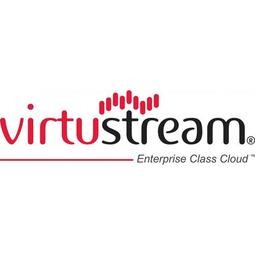
Technology Category
- Drones - Flight & Control Systems
Applicable Industries
- Education
Applicable Functions
- Product Research & Development
Use Cases
- Behavior & Emotion Tracking
- Leakage & Flood Monitoring
Services
- Hardware Design & Engineering Services
- Training
The Customer
Dell Technologies
About The Customer
The customers in this case study are businesses of all sizes, from home-based to large organizations. They are operating in a rapidly evolving digital landscape and are seeking to keep up with the pace of technological advancements. These businesses are using a range of hardware and software, from individual PCs to complex IT datacenters and cloud systems. They are looking to maximize the operational efficiency of these systems, proactively monitor potential issues, and ensure fast repairs throughout their lifecycle. Furthermore, they are aiming to turn their big ideas into tangible outcomes and navigate their digital transformation journey. They are looking to identify their goals, measure progress, streamline costs, and accelerate innovation to achieve true organizational agility.
The Challenge
In the rapidly evolving digital landscape, businesses of all sizes, from home-based to large organizations, are facing the challenge of keeping up with the pace of technological advancements. They are struggling to get the most out of their hardware and software, from individual PCs to complex IT datacenters and cloud systems. The challenge is not just about maintaining the operational efficiency of these systems, but also about proactively monitoring potential issues and ensuring fast repairs throughout their lifecycle. Furthermore, businesses are seeking to turn their big ideas into tangible outcomes, but often find themselves hindered by obstacles in their digital transformation journey. They need to identify their goals, measure progress, streamline costs, and accelerate innovation to achieve true organizational agility.
The Solution
To address these challenges, a comprehensive suite of services is offered, designed to cater to the unique needs of different businesses. These services range from incident response and recovery to consulting, deployment, support services, managed services, education services, residency services, and payment solutions. The incident response and recovery service ensures quick response and recovery from cyber threats, backed by a global network. The consulting service provides targeted approaches to plan and execute digital transformation, from objective assessment and strategy development to full-scale implementations. The deployment service ensures faster and smoother hardware installations, planning, configuration, and complex integrations. The support services leverage world-class technology to maximize productivity, uptime, and convenience, with an AI engine that proactively detects and prevents issues. The managed services allow businesses to focus on their digital innovation and transformation, reducing the cost, complexity, and risk of managing IT. The education services empower teams with the necessary training, certification, and skills, while the residency services match experts with customers to address specific business needs. Finally, the payment solutions offer flexible options for technology financing.
Operational Impact

Case Study missing?
Start adding your own!
Register with your work email and create a new case study profile for your business.
Related Case Studies.

Case Study
Revolutionizing Medical Training in India: GSL Smart Lab and the LAP Mentor
The GSL SMART Lab, a collective effort of the GSL College of Medicine and the GSL College of Nursing and Health Science, was facing a challenge in providing superior training to healthcare professionals. As clinical medicine was becoming more focused on patient safety and quality of care, the need for medical simulation to bridge the educational gap between the classroom and the clinical environment was becoming increasingly apparent. Dr. Sandeep Ganni, the director of the GSL SMART Lab, envisioned a world-class surgical and medical training center where physicians and healthcare professionals could learn skills through simulation training. He was looking for different simulators for different specialties to provide both basic and advanced simulation training. For laparoscopic surgery, he was interested in a high fidelity simulator that could provide basic surgical and suturing skills training for international accreditation as well as specific hands-on training in complex laparoscopic procedures for practicing physicians in India.

Case Study
IoT platform Enables Safety Solutions for U.S. School Districts
Designed to alert drivers when schoolchildren are present, especially in low-visibility conditions, school-zone flasher signals are typically updated manually at each school. The switching is based on the school calendar and manually changed when an unexpected early dismissal occurs, as in the case of a weather-event altering the normal schedule. The process to reprogram the flashers requires a significant effort by school district personnel to implement due to the large number of warning flashers installed across an entire school district.

Case Study
Implementing Robotic Surgery Training Simulator for Enhanced Surgical Proficiency
Fundacio Puigvert, a leading European medical center specializing in Urology, Nephrology, and Andrology, faced a significant challenge in training its surgical residents. The institution recognized the need for a more standardized and comprehensive training curriculum, particularly in the area of robotic surgery. The challenge was underscored by two independent studies showing that less than 5% of residents in Italian and German residency programs could perform major or complex procedures by the end of their residency. The institution sought to establish a virtual reality simulation lab that would include endourological, laparoscopic, and robotic platforms. However, they needed a simulator that could replicate both the hardware and software of the robotic Da Vinci console used in the operating room, without being connected to the actual physical console. They also required a system that could provide both basic and advanced simulation training, and a metrics system to assess the proficiency of the trainees before they performed surgical procedures in the operating theater.

Case Study
Edinburgh Napier University streamlines long-distance learning with Cisco WebEX
• Geographically dispersed campus made in-person meetings costly and inconvenient.• Distance-learning programs in Malaysia, India, and China required dependable, user-friendly online tools to maximize interaction in collaborative workspaces.• Virtual learning environment required a separate sign-in process, resulting in a significant administrative burden for IT staff and limited adoption of collaboration technology.

Case Study
8x increased productivity with VKS
Before VKS, a teacher would spend a lot of time showing a group of 22 students how to build a set of stairs within a semester of 120 hours. Along with not leaving the teacher much time to provide one-on-one support for each student to properly learn carpentry, it also left a considerable amount of room for error. Key information would be misinterpreted or lost as the class was taught in the typical show-and-tell way.

Case Study
Scalable IoT Empowering GreenFlex's Sustainable Growth
GreenFlex, a company that supports sustainable development, decarbonization, and energy efficiency, faced several challenges in its quest to expand its business. The company needed to deploy a robust and sustainable IoT technology to support its growth. It was crucial for them to monitor and control devices at customer sites in a safe and reliable manner. They also needed to integrate devices across a range of communication protocols and gather and act on data to meet efficiency targets. GreenFlex had previously built IoT capabilities into its digital platform, GreenFlexIQ, to monitor and manage customer sites remotely. However, they soon realized that they needed a new platform to support their ambitions. They needed a platform that could scale to connect more devices for production management and make it easier for the operations team to manage devices in the field.







